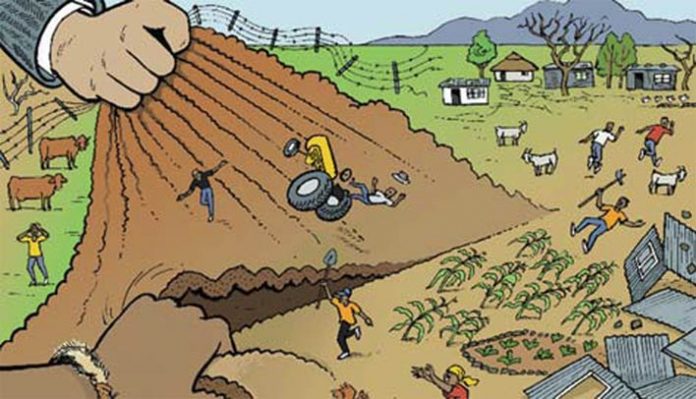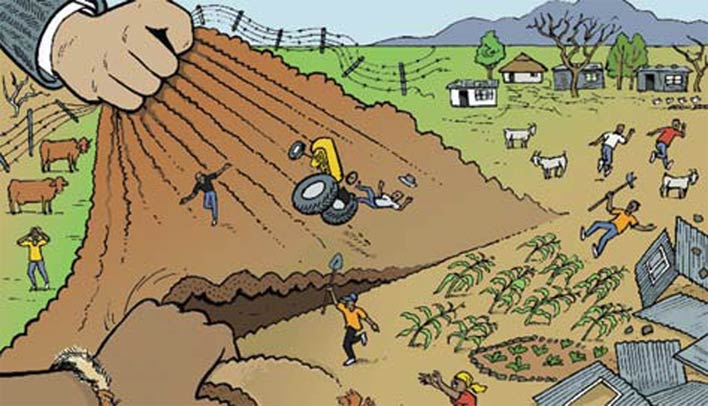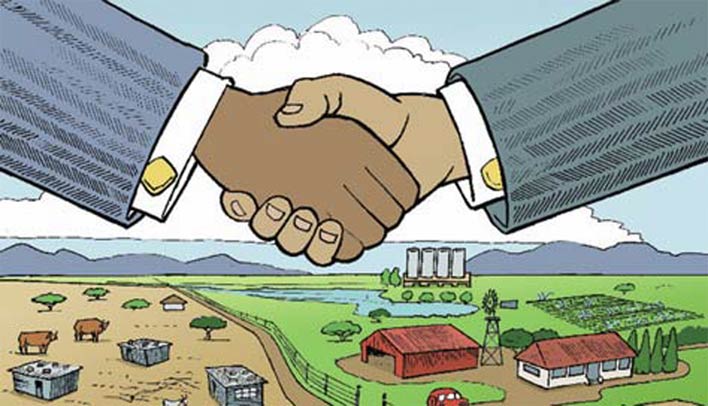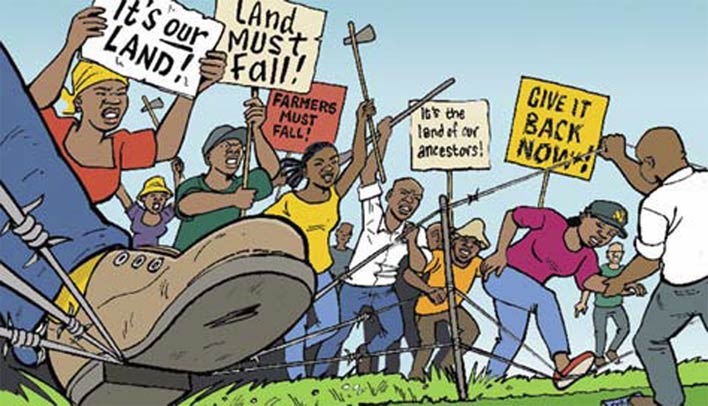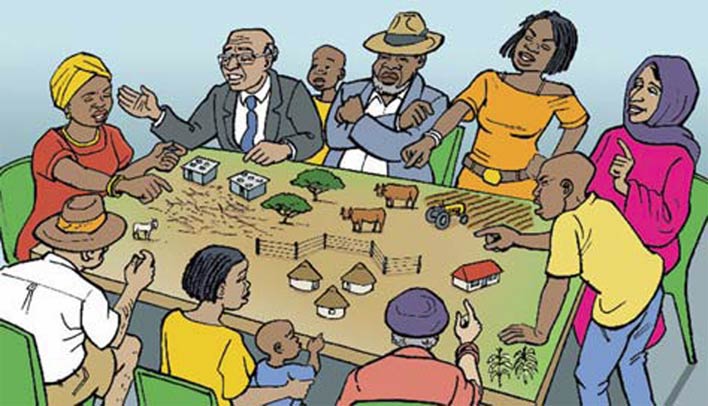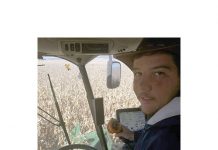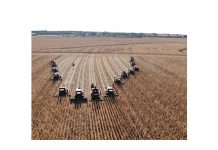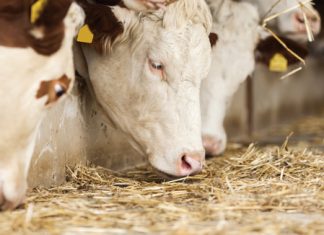January 2017
LOUISE KUNZ, SA Graan/Grain contributor
During a debate at this year’s Agri SA congress a panel discussion on the future of land reform agreed that when it comes to successful land reform, intense negotiations and compromises are necessary. Properly managed land reform can create assets for the poor, stabilise relationships and promote development. On the other hand, if it is poorly managed, it destroys assets, impoverishes communities and weakens the economy.
South Africa currently faces a predicament as the process of land reform has advanced too slowly for post freedom expectations and much of the land that has been transferred has become economically inactive.
A solution to the problem
Vumelana was established in 2012 as a non-profit organisation, to help communities and investors come to fair agreement about the development of community-controlled land. The project is led by a board of prominent South Africans with Dr Johan van Zyl (former Group CEO of Sanlam) as chairman of the board. Their aim is to demonstrate the value of community private partnerships as a contribution to successful land reform. The process involves evaluating the land and then packaging it as a commercial proposition that goes out on tender.
This initiative to match land reform beneficiary communities with private investors has taken on 40 projects representing vast areas of land restored to communities throughout the country. A significant part of the funding available for the acquisition of land is used to recapitalise projects that have failed, like the disastrous Mamahlola land claim in the Limpopo Province. Read more about the Vumelana Advisory Fund at www.vumelana.org.za.
Land reform’s future
Conflicting views cause South Africans to have questions about land reform. What is the future of land reform in South Africa? Can the process be accelerated? Will it produce equitable outcomes? Whose interests will be served? What will be the impact on food security?
To initiate an open and practical search for strategic responses to the future of land reform, four fictional scenarios were developed and produced over a twelve-month period by a heterogeneous scenario team.
The Vumelana Advisory Fund convened and supported this project. Reos Partners, a company that has been designing and facilitating systemic change projects for more than 20 years, managed the process. 40 people who approach land reform from widely differing perspectives took part in the development thereof: Policy-makers and administrators, traditional leaders, communal property institution leaders, activists, business people, academics and consultants.
This project was developed through discussion and debate by the team whose discussions took into account the views of over 100 people about land reform. It contains unresolved dilemmas that invite deeper debate and discussion. In each scenario, stakeholder action influences the character of land reform and shapes who ‘wins’ and ‘loses’ in the land reform stakes. A short video clip of each scenario can be viewed at http://www.landreformfutures.org/.
Scenario 1: Connection and capture
This first story is about using land as power – the land reform programme opens the way for politically connected interest groups to benefit at the expense of ordinary people. In this scenario the winners are those who hold power and broker deals with the losers being ordinary people outside the networks of patronage. This story shows that rural households will have little residence security and women will remain particularly disadvantaged.
By 2030, with government being unable (or unwilling) to hold traditional leaders, communal property institutions and redistribution beneficiaries to account, it will remain easy for well-connected business people and politicians to capture land reform for their own purposes.
Scenario 2: Market power and concentration
The second story is about land as a productive asset with land reform changing the racial profile of farming, without broadening ownership to small farmers and local communities. In this scenario the government encourages market-based land transfers through community-private partnerships.
By 2030 black South Africans could own about half of the land in the commercial farming sector. Although the structure of agriculture will not have changed, the number of commercial farms would have decreased from 40 000 in 2016 to 20 000.
Smallholders will still struggle to get a foothold with limited support as the state will focus on the needs of urban areas, with food security in rural areas at risk. Expectant land claimants could feel that land reform has given them a raw deal.
Scenario 3: Occupation and confiscation
The third story focuses on taking back the land. It is about the illegal occupation of land with deepening hardship and hunger driving a countrywide campaign of land invasion and occupation. This could lead to the amendment of the constitution to allow confiscation without compensation. The winners will be those who occupy the land and have their occupation legitimised, with the immediate losers being those whose land is occupied.
By 2030, 60% of commercial farmland could be in the hands of black South Africans. The new government could comprise former opposition groups with competing views on land agriculture with the country lacking a clear constitutional framework for dealing with land. Many of the urban impoverished will still go hungry with an uncertain future.
Scenario 4: Hard bargaining and compromise
The final story is one about sharing the land. In this scenario the ruling party takes a more inclusive approach to land reform and uses incentives to draw private sector players, institutions and civil society organisations into resolving land reform challenges. Hard bargaining and compromise will unclutter the policy agenda. Large and small farmers, land reform beneficiaries, civil society organisations and financing partners will be enabled by a government that seeks a collaborative approach to land reform with a primary emphasis on the poor. Practical strategies for land redistribution will cause the gap between small-scale and commercial farming to narrow.
In this scenario land reform will, by 2030, become a shared responsibility among a wide range of participants supported by an enabling state committed to the underprivileged. There will be a greater diversity of land holding arrangements and land uses. Although food security will remain fragile, there should be a rising optimism amongst South Africans.
In conclusion, these are not predictions of what will happen or recommendations about what should happen; they are only plausible possibilities of what could happen.
Sources
http://www.vumelana.org.za
http://www.landreformfutures.org/
http://landbou.com/nuus/
Publication: January 2017
Section: Relevant



